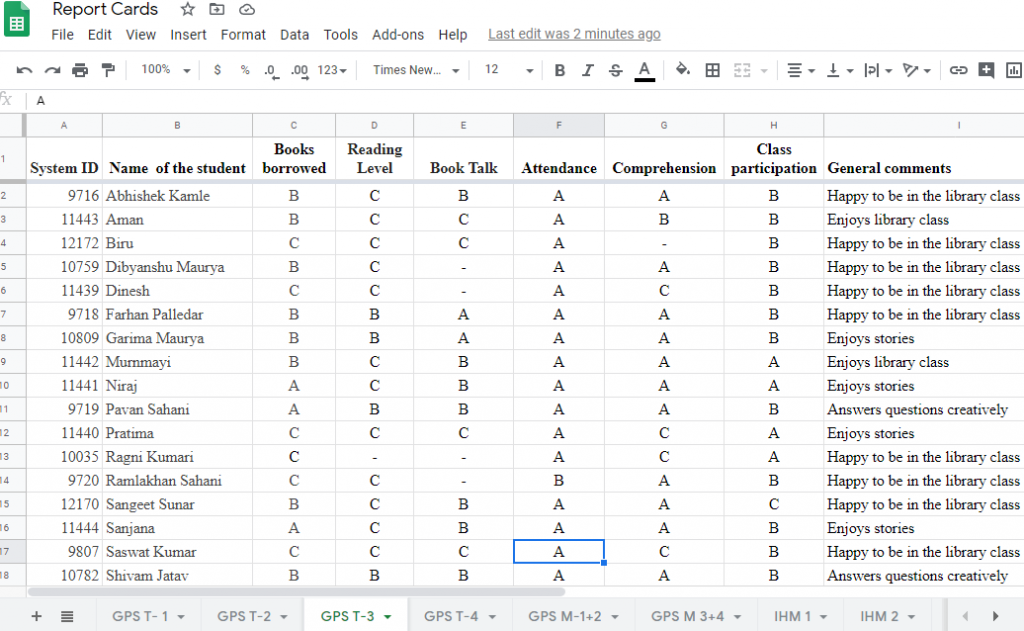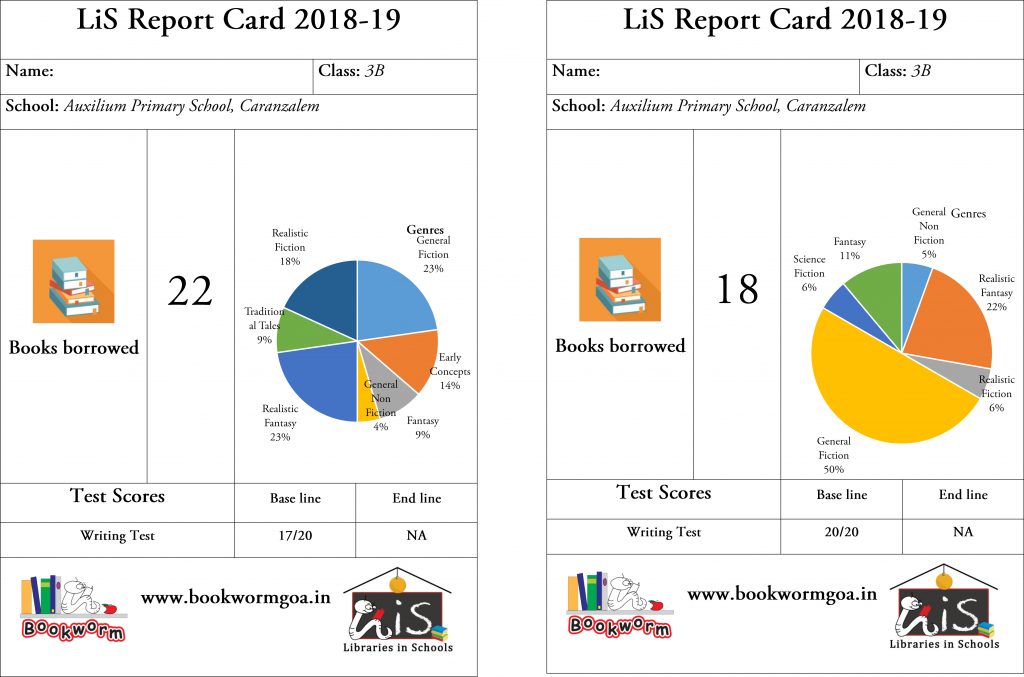The word report carries a lot of weight. For example, if it is a medical report the patient has to wait for the doctor to analyse it and proceed accordingly. A college report decides a student’s future course of action. In a school report card, parents and children get a view of how the child has performed in each subject and builds up on expectations for the future.
At Bookworm we write different kinds of reports such as a report on the daily happenings in the library, reflective feedback reports on the library sessions in schools and communities with children and reports to our various supporting partners. These reports written are shared between the team at Bookworm or the community at large but not with the children.
This year at Bookworm we decided to do report cards for the children as part of the Libraries in School (LiS) program. Usha Mukunda, a children’s librarian we admire, love and respect writes, “An inherent aim of an assessment is to bring about supportive action. Therefore it is essential to hold assessment with a light grip because many times we have seen that children take quantum leaps in short spaces of times and the assessment seems out-dated”.
I will share our approach on forming these report cards, by responding to three questions that Usha raises in her paper on assessment.
1. Why do we wish to measure?
We get twenty six hours with a group of children over nine months of the academic year. We have worked with the same group of children, watching them grow from Std 1 to Std 4 in different schools. One of the reasons for us to wish to measure was to capture how the library sessions impact children. And the second reason was to let others working in the same field learn with us as we try out ways to document report cards for children in the library.
2. What do we wish to measure?
This was not a difficult question. We knew we could only measure what we were doing. So we listed out the different things that we do during a library session and drew upon that to measure children on those components. For Std I and II we looked at the numbers of books borrowed by the child, attendance and participation in the library session. For Std III and IV we checked children reading levels to provide a collection of books which match their reading. This also gave us an overview of the literacy level of the class as a whole. We measured listening comprehension as read alouds are a strong part of the program. For this, we had a paper pencil test at the beginning of the year and the end based on a story that was read aloud. Book talk parameters and conversation with children about the book that they have borrowed were also data points for us.
3. Once we have the information, what do we intend to do with it?
Every year we collect this information. We have not looked at this data as a whole in the past, in terms of what it was telling us. And neither have we shared detailed reports with the children. Our data always lay in bits and pieces. At the end of every school year, we would have a feedback meeting with all the schools and from there the idea emerged that we should also do a library report for the children. We had a lot of data for each child but it was not enough that we understood what we were doing and why, we felt we needed to put it out. We also noticed the importance of different stakeholders to academic report cards. Giving a Library Report Card would give library work equal validation like other subjects.
Data that made it to the report card for the year 2019-20
Doing the report was not an easy task. We had multiple meetings and discussions over this topic and were trying to make sure that everyone understood the three questions answered above. For example, to record and analyse the conversations we had during the year with children, we had to arrive at a rubric where common responses were noted and generate a drop-down menu to enable us to record children’s responses. A rubric was done for each of the components in the report to standardise it to the school report card which gives grades and which we hoped would be understood more easily.
The process of doing the report card was a learning experience. We were happy to finally have all the data in one place. This allowed us to form an overview for each child in the class at the end of the year. We could also reflect on which components worked very well for us this year and the ones that still need to be worked on. We also began to think about components that were not providing us with any ‘real’ value and recording them may be dropped in the following year. But mostly, we were very keen to provide the children with individual report cards for their year in the library.
This did not happen due to the COVID-19 outbreak and schools being abruptly shut. We, however, look forward to the next year and will take our learnings with us.
Sample report cards from 2018-19
References:
Mukunda, Usha. Interpretive Approach to Library Assessment (2013). unpublished



